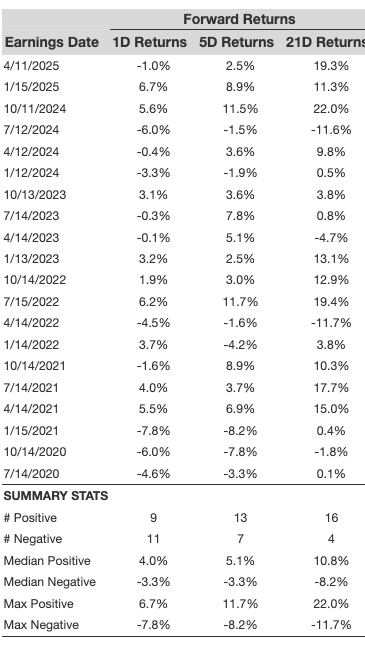Understanding Baby Bonds: A Simple Guide for Young Investors
Baby bonds are fixed-income securities provided by government entities and corporations that guarantee regular interest payments. These bonds are typically available for under $1,000, allowing a broader range of investors to participate. In the U.S., the term “baby bonds” can also refer to savings accounts for children, aimed at addressing wealth inequality, but this differs from the investment instruments discussed here. Consulting a financial advisor can help you understand how baby bonds might fit into your investment strategy.
What Are Baby Bonds?
Similar to traditional bonds, baby bonds enable investors to lend money to the issuer in return for periodic interest payments and the full return of the principal when the bond matures. These bonds are attractive to those looking for low-risk options that contribute to income generation and diversification within their investment portfolios, often starting at denominations as low as $25.
Key Features of Baby Bonds
Baby bonds generally possess several important characteristics:
- Small Denominations: With initial amounts as low as $25, baby bonds are accessible for individual investors with limited capital.
- Medium Maturity Terms: Most baby bonds mature within eight to 15 years, ensuring steady interest payments over time.
- Callable Option: Some baby bonds may be callable, allowing issuers to redeem them before maturity, which can affect long-term earnings.
- Tax Implications: Interest earned from baby bonds can either be taxable or tax-exempt, which can affect overall returns for investors.
Where You Might Find Baby Bonds
These bonds are often issued to fulfill funding needs. Public utilities and municipal governments commonly issue baby bonds to finance infrastructure projects such as road repairs and school construction. These low-denomination bonds are popular among many retail investors seeking stable, low-risk returns.
Corporate entities also leverage baby bonds for capital raising. Real estate investment trusts (REITs), for instance, may issue such bonds to support property acquisition or development projects, providing stable income to investors as they typically have strong backing.
State governments sometimes offer baby bonds to finance affordable housing initiatives or educational funding. These projects tend to be bolstered by solid credit ratings, granting additional security for bondholders.
However, it is important to be aware that baby bonds may often be unsecured, which can expose them to a greater risk of default compared to secured bonds.
Advantages of Investing in Baby Bonds
For investors considering baby bonds, here are four benefits to note:
- Accessibility: The low minimum investment makes baby bonds an affordable option for many investors, offering a means to enter the fixed-income market.
- Stable Income: Baby bonds provide consistent interest payments, making them ideal for income-focused portfolios, especially for conservative investors.
- Lower Risk: Most baby bonds are issued by government entities or well-established corporations, reducing investment risk compared to equities.
- Portfolio Diversification: Adding baby bonds to an investment portfolio can help balance risk, lowering overall volatility.
Potential Drawbacks of Baby Bonds
Like any investment, baby bonds come with drawbacks. Here are four to consider:
- Lower Returns: Baby bonds tend to offer modest yields, which may not keep up with inflation or meet growth expectations for aggressive investors.
- Interest Rate Risk: Being fixed-income securities, baby bonds can lose value when interest rates rise.
- Callable Feature: If a bond can be called, issuers can redeem it early, affecting income flow and limiting long-term earnings potential.
- Liquidity Constraints: Baby bonds may not trade as frequently as traditional bonds, making quick sales without discounts challenging.
Tax Considerations for Baby Bond Investors

Before investing, it’s essential to consider the tax consequences. Here are six tax-related factors to keep in mind:
- Interest Income Taxation: Interest can be either taxable or tax-exempt. Municipal bonds often provide tax-exempt interest, leading to potentially higher effective returns.
- Tax Benefits for Specific Projects: Bonds funding certain initiatives may offer tax credits or deductions that provide beyond-standard benefits.
- Impact on Your Tax Bracket: Earnings from baby bonds can increase taxable income, potentially placing you in a higher tax bracket.
- Capital Gains Tax: Selling baby bonds for a profit may incur capital gains tax based on how long you held the bonds and your income level.
- Alternative Minimum Tax (AMT): Even if interest is tax-exempt, it could still impact the AMT, especially for high-income earners.
- Strategic Tax Planning: Timing your purchase or sale of baby bonds can have tax implications. Align these decisions with your broader financial plans to optimize outcomes.
How to Purchase Baby Bonds
Buying baby bonds typically follows the same process as purchasing other bonds through a brokerage account. Most baby bonds trade on major stock exchanges, and you can find them using specific ticker symbols on your broker’s platform.
Before making a purchase, it’s crucial to review key details, such as the interest rate, maturity date, and whether the bond is callable. Knowledge of these factors can help you align your investment with your financial objectives.
Additionally, keep in mind any fees or commissions associated with buying bonds through a broker, as these can affect your overall returns. For tailored advice, consider enlisting a financial advisor to help identify baby bonds suited to your risk tolerance and investment strategy.
Conclusion

Baby bonds present a practical and trustworthy option for investors to diversify their portfolios while ensuring steady income. By understanding their features—like lower yields, interest rate sensitivity, and potential callability—investors can assess whether incorporating baby bonds into their investment strategy aligns with their goals.
Investment Planning Tips
- A financial advisor can help analyze investments and simplify risk management for your portfolio. Finding one is easy; SmartAsset’s free tool connects you to vetted advisors in your area. A complimentary introductory call can help you choose the right advisor for your financial objectives.
- If you’re interested in additional investment diversification, consider exploring this list of 13 potential investments.
Photo credit: ©iStock.com/PeopleImages, ©iStock.com/mapodile, ©iStock.com/hobo_018
The post Baby Bonds: Definition, Pros and Cons, Examples appeared first on SmartReads by SmartAsset.
The views and opinions expressed herein are the views and opinions of the author and do not necessarily reflect those of Nasdaq, Inc.









